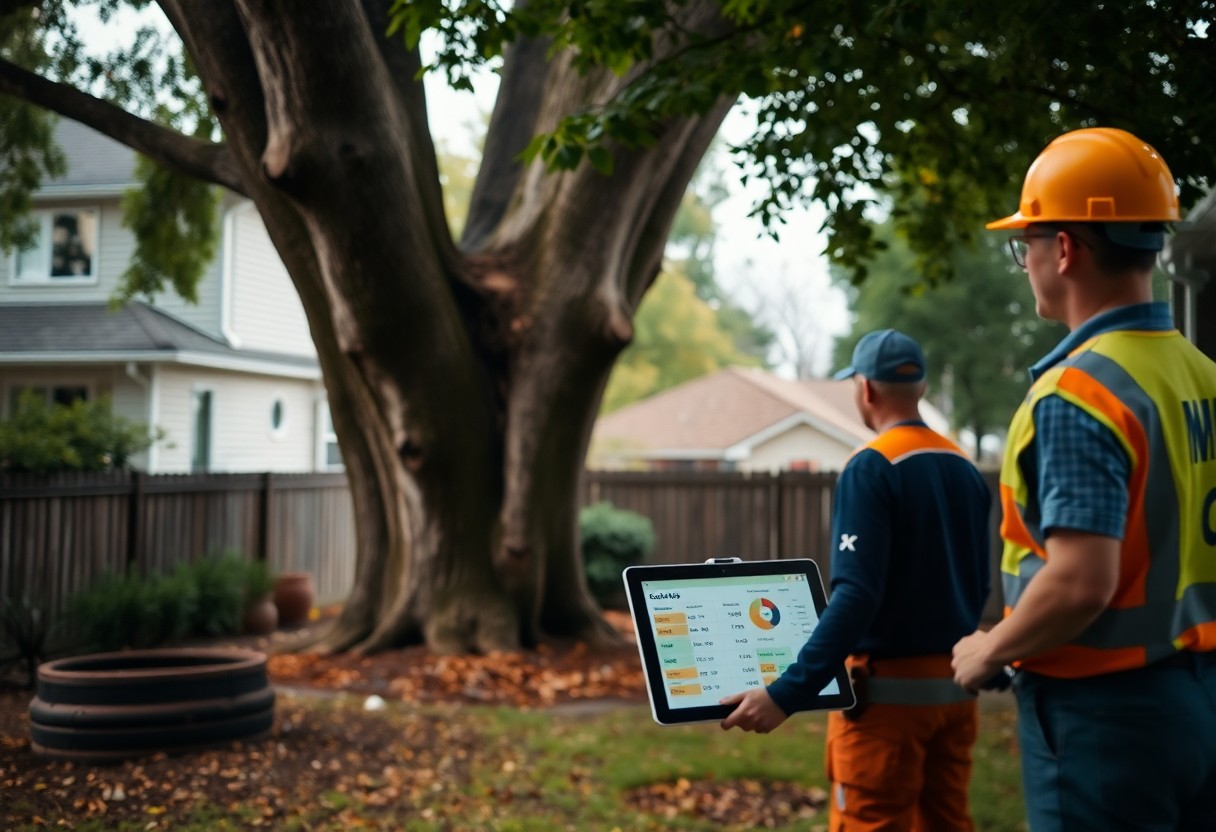Palm trees, with their swaying fronds and towering presence, conjure images of exotic paradises and sandy beaches. However, beneath their beauty lies a complex structure that demands careful consideration when it comes to their weight.
Understanding the weight of a palm tree is crucial for arborists, landscapers, and property owners because it impacts various aspects such as transportation, maintenance, and safety. Through the use of modern tools and techniques, estimating the weight of a palm tree has become more precise and accessible.
A Palm Tree Weight Calculator estimates the weight of a palm tree by inputting its height and diameter, providing useful information for maintenance and transportation.
Palm Tree Weight Calculator
| Height | The height of the palm tree, measured from the ground level to the top of the tree, excluding any fronds or leaves. | feet/meters |
| Trunk Diameter | The diameter of the palm tree trunk, measured at a height of 4 feet (1.2 meters) from the ground level. | inches/centimeters |
| Frond Length | The average length of the fronds or leaves of the palm tree. | feet/meters |
| Frond Count | The total number of fronds on the palm tree. | count |
| Frond Weight | The average weight of a single frond. | pounds/kilograms |
| Weight of Fruits | The estimated weight of fruits (if applicable) borne by the palm tree. | pounds/kilograms |
| Weight of Trunk | The estimated weight of the palm tree trunk. | pounds/kilograms |
| Weight of Fronds | The estimated weight of all the fronds combined. | pounds/kilograms |
| Total Weight | The total estimated weight of the entire palm tree, including trunk, fronds, and fruits (if applicable). | pounds/kilograms |
One of our articles –Oak Tree Weight Calculator.
Palm trees are a type of tropical or subtropical tree known for their distinctive long, feather-like leaves and typically unbranched trunk.
Comprehending the Burden of Palm Trees
Before exploring the calculation methods, it’s important to understand the factors that influence the weight of palm trees.
Although palm trees may appear lightweight due to their fibrous structure, they can actually weigh several tons, depending on their species, age, size, and environmental conditions.
Accurately assessing their weight is essential for selecting the proper equipment for handling, transportation, and planting, which helps ensure the tree’s longevity and minimize potential risks.
Palm Tree Weight Chart
| Palm Tree Species | Average Weight (lbs) | Maximum Weight (lbs) | Notes |
|---|---|---|---|
| Coconut Palm | 1,000 – 2,000 | Up to 5,000 | Weight varies based on size and age. |
| Date Palm | 300 – 600 | Up to 1,000 | Weight depends on the size and maturity of the tree. |
| Queen Palm | 50 – 200 | Up to 500 | Smaller and lighter compared to some other palm species. |
| Royal Palm | 500 – 1,000 | Up to 2,000 | Heavier when mature with a larger canopy. |
| Areca Palm | 10 – 50 | Up to 100 | Relatively lightweight, suitable for indoor use. |
Factors Affecting Palm Tree Weight
The weight of a palm tree is influenced by several factors that need to be considered when estimating its mass accurately. Let’s explore some of the primary factors that play a role in determining a palm tree’s weight.
Species and Variety
Different palm tree species and varieties vary significantly in terms of their weight.
Some species, like the Canary Island Date Palm (Phoenix canariensis), are known to be heavier due to their dense trunks and broad fronds.
On the other hand, slender and delicate species such as the Lady Palm (Rhapis excelsa) may weigh considerably less. Identifying the species and variety of a palm tree is crucial for obtaining accurate weight estimates.
Age and Size
As with most living organisms, a palm tree’s weight tends to increase with age and size. Young palm trees generally weigh less compared to mature ones.
The girth of the trunk, the height of the tree, and the overall volume of the foliage contribute significantly to its weight. When estimating the weight of a palm tree, considering its age and size is essential for precision.
Environmental Conditions
The environment in which a palm tree grows also affects its weight. Factors such as soil type, moisture levels, and exposure to wind and extreme weather conditions can influence the density and water content of the tree’s tissues.
Palm trees growing in more favorable conditions tend to be healthier and potentially weigh more than those subjected to harsh environments.
One of our articles –Woodworking Time Calculator.
Tools and Methods for Palm Tree Weight Calculation

Estimating the weight of a palm tree can be approached through various traditional methods or with the help of modern tools and technologies. Let’s explore some commonly used techniques for palm tree weight calculation.
Traditional Methods
Traditional methods for estimating palm tree weight often involve manual measurements, calculations, and visual assessments.
These methods may include using tape measures to measure the circumference of the trunk, determining the tree’s height, and visually comparing its size and volume with known reference standards.
While these techniques can provide rough estimates, they are prone to inaccuracies and do not account for complex factors like density and environmental conditions.
Modern Tools and Technologies
Advancements in technology have introduced specialized tools and equipment that facilitate more precise palm tree weight calculation.
One such tool is the palm tree weight calculator, which utilizes algorithms and formulas based on extensive research and data.
These calculators take into account various parameters, including the species, age, size, and environmental factors, to provide a more accurate estimate of a palm tree’s weight.
Importance of Knowing Palm Tree Weight
Understanding the weight of a palm tree holds significant value for several reasons. Firstly, it helps in choosing the right equipment and techniques for tree care, maintenance, and transportation.
This ensures the safety of both the tree and the individuals involved in its handling. Additionally, having knowledge of a palm tree’s weight can offer insights into its overall health and potential growth patterns.
This, in turn, enables arborists and landscapers to customize their maintenance strategies accordingly.
Step-by-Step Guide to Using a Palm Tree Weight Calculator
Using a palm tree weight calculator can simplify the estimation process and enhance accuracy. Here is a step-by-step guide to help you effectively utilize a palm tree weight calculator:
Gather Necessary Information
Start by collecting the required information about the palm tree. This information should include its species, variety, age, and size. If possible, measure the trunk circumference at chest height and record the tree’s height as well.
Select the Right Calculator
Several palm tree weight calculators are available online. Choose a reputable calculator that takes into account a wide range of parameters for accurate results.
Enter the Required Parameters
Once you’ve selected a calculator, input the gathered information into the respective fields. The calculator may prompt you to provide details such as the palm tree’s species, circumference, height, and any additional relevant data.
Obtain the Weight Estimate
After entering all the necessary parameters, the calculator will process the information and generate an estimated weight for the palm tree. The result is typically displayed in pounds or kilograms, depending on the calculator’s settings.
Palm Tree Weight Calculator
Tips for Maintaining Healthy Palm Trees
Calculating the weight of palm trees can provide valuable insights, but ensuring their health and longevity is equally important. Here are some tips for maintaining healthy palm trees:
- Provide regular watering appropriate for the species and environmental conditions.
- Apply balanced fertilizers to promote optimal growth and nutrient uptake.
- Prune dead or damaged fronds to enhance the tree’s appearance and prevent potential hazards.
- Protect the tree from extreme weather conditions, such as frost or excessive heat.
- Monitor for pests and diseases and take appropriate measures for control and prevention.
By following these guidelines, you can contribute to the well-being of your palm trees and maintain their beauty for years to come.
Related Questions-Palm Tree Weight Calculator
How Much Does a Palm Tree Weigh?
The weight of a palm tree can vary widely, but an average mature palm tree may weigh between 1,000 and 3,000 pounds (450 to 1,360 kilograms).
How Much Does an Oak Tree Weigh?
An oak tree's weight can vary significantly depending on its size and age, but a mature oak tree might weigh between 5,000 and 10,000 pounds (2,270 to 4,540 kilograms).
How Much Does an Log Weigh?
The weight of a log depends on its size and wood type, but a typical log can weigh anywhere from a few hundred pounds to several thousand pounds (around 100 to 2,270 kilograms).
How Much Does a Tree Trunk Weigh?
The weight of a tree trunk varies based on the tree species and its size, but a medium-sized tree trunk might weigh several thousand pounds (1,360 to 4,540 kilograms).
How Much Does a Tree Weight?
The weight of a tree varies by species, size, and age, but mature trees generally weigh anywhere from a few tons to tens of tons (1 to 100 metric tonnes).
Can I estimate the weight of a palm tree without a calculator?
Yes, it is possible to estimate the weight of a palm tree using traditional methods, but these may be less accurate compared to utilizing specialized palm tree weight calculators.
Is palm tree weight directly related to its health?
While palm tree weight can provide insights into its overall health and growth, it is not the sole determining factor. Other aspects such as foliage condition, root health, and pest infestations should also be considered.
Can I use a regular scale to measure the weight of a small palm tree?
Using a regular scale to measure the weight of a small palm tree may not provide accurate results due to the tree's size and shape. Palm tree weight calculators or professional arborists can offer more precise estimates.
How often should I measure the weight of my palm tree?
Measuring the weight of a palm tree periodically, especially during significant growth phases or after extreme weather events, can help track its progress and identify any potential changes in weight that may require attention.
Are palm trees heavy enough to cause damage during storms or hurricanes?
Palm trees can pose a risk during severe weather events, especially if they are not well-maintained or are planted in soil with poor drainage. Strong winds can uproot or topple palm trees, potentially causing damage to property.
How do you calculate the weight of a tree?
To calculate the weight of a tree, you can use various methods including measuring its diameter at breast height (DBH) and applying a species-specific wood density factor, or by using advanced techniques like terrestrial laser scanning to estimate biomass.
What is the average size of a palm tree?
The average size of a palm tree typically ranges from 20 to 70 feet in height.








